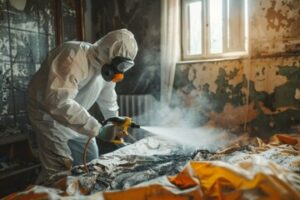Home Remodeling Fulshear TX is the process of updating and improving your home. The idea is to create a living space that suits your lifestyle and needs.

A major remodel can involve structural changes such as moving walls, adding rooms, and rerouting plumbing or electrical lines. It’s important to choose an experienced professional for this type of work.
Some home improvements have a higher ROI than others, but all remodeling projects can improve your house’s overall value. The key is to focus on those upgrades that balance style, functionality, and long-term appeal. Analyzing local real estate trends and looking at your house’s current condition can provide insights into what upgrades are most sought-after by potential buyers.
Remodeling can transform an outdated or dysfunctional living space into a beautiful and functional space that will make your home stand out in the neighborhood and attract the right type of buyers. The best way to boost your home’s value is to focus on high-ROI projects, like modernizing bathrooms or kitchens, adding a laundry room, or turning an unfinished basement into a usable space.
Homeowners often confuse renovating and remodeling, but there is a distinct difference between the two. Remodeling alters a property’s structure and function while renovation focuses on cosmetic updates.
It’s important to choose a qualified general contractor for your home improvement project. A reputable company will ensure your project is completed to the highest standard and in line with industry standards. They will also have a deep understanding of the design and build process and work with you to find the right products and finishes for your project.
A professional designer will meet with you to discuss your ideas and tour your home before creating renderings and final drawings. They will help you select cabinet styles, flooring, tile, and more to ensure your project is a perfect fit for your home. They can even help you create a budget and schedule for your project, saving you from the headache of trying to manage a large remodel on your own.
Increase Your Home’s Energy Efficiency
Home remodeling projects often involve changing the structure and purpose of a property, but it can also be a way to make your home more energy efficient. Upgrading windows, adding insulation, and replacing old appliances with more energy-efficient models can help reduce your utility bills and create a more comfortable living space year-round.
Moreover, installing solar panels or a green roof can increase the efficiency of your home’s heating and cooling systems. These upgrades can also reduce your carbon footprint and contribute to a healthier planet.
Remodeling can also address issues caused by wear and tear, such as plumbing leaks or structural damage. These repairs can prevent further problems and prolong the lifespan of your house. However, you must prepare for the fact that your property will be out of commission during the duration of the project. This may require moving out temporarily or at least limiting your home’s use.
You should also be ready to sacrifice some privacy as contractors may need to enter your property while completing the work. This can be challenging, especially if you have children and pets at home. But you must remember that the end result is worth the sacrifice.
Considering all the benefits of home remodeling, it’s clear why homeowners invest in this type of upgrade. From increasing the value of your property to improving comfort and functionality, these projects are worthwhile. However, it is essential to hire a reputable contractor to ensure the results are of high quality. A qualified contractor can also handle unforeseen challenges during the project. Moreover, they can provide you with cost-effective solutions and transparency in communication. This will help you achieve your home improvement goals without overspending.
Increase Your Home’s Comfortability
A key component of home remodeling is transforming a house into a comfortable living space that reflects the personality and lifestyle of its residents. This can be done in a variety of ways, including adding a home gym or entertainment room to a house with an outdated kitchen or unfinished basement. Alternatively, a remodel could include upgrading appliances or installing energy-efficient windows and fixtures. These upgrades help to improve overall comfort and reduce utility bills, making them a smart investment.
Another way to increase your home’s comfortability is by addressing safety and security concerns. By making improvements like upgrading your locks and adding a security system, you can make your home a safer place for you and your family to live. These updates may also help you to feel more confident in entertaining guests or hosting large gatherings.
Over time, many homeowners find that their homes aren’t well suited to their needs. This can be due to a lack of storage space or inefficient layouts. Remodeling can address these issues by adding more closet space or creating open floor plans. Alternatively, you can add features like a mudroom or pantry to streamline your daily routines.
Remodels can also make your home more livable for future generations by incorporating sustainable, universal design and smart technology. This will ensure that your home can adapt to changing needs and trends, so it will remain a good long-term investment.
While renovations can be DIY-friendly, a remodel typically involves larger structural changes that require a professional contractor. It’s important to carefully consider your options before undertaking a remodel, as there are many potential risks and hidden costs involved. For example, removing a wall can expose electrical wires, water lines or ductwork that will need to be rerouted. It’s also a good idea to choose a contractor that is experienced in remodeling and carries the appropriate licenses and insurance.
Increase Your Home’s Social Space
Home remodeling can create social spaces that encourage gatherings with friends and family. Upgrades like a home theater room or outdoor living area provide places where guests can relax and make memories. Adding a bar or kitchen island can also help families come together for informal gatherings.
Remodeling can also improve a home’s comfort by increasing energy efficiency and improving indoor climate control. Adding new insulation or replacing old windows can help reduce monthly utility costs. Installing a new HVAC system can also increase indoor air quality, making the home more comfortable to live in year-round.
A home remodel can also be an opportunity to make the house a reflection of your personality and lifestyle. A more modern aesthetic can increase your home’s appeal and attract potential buyers. This can help you get more out of your home when it comes time to sell.
However, a more social home doesn’t have to compromise privacy or lack personal touches. For example, a cozy social space can include soft background music and shelves filled with books, paintings, and other items that show off your interests. In addition, you can add throw pillows and cushions for people to sit on.
Choosing the right general contractor for your home remodeling project is critical. A professional can make the process go more smoothly and ensure that your home improvement project meets all local codes and requirements. They can also coordinate with subcontractors and handle permits. They can work well under pressure, meet deadlines, and make sure that all the details are taken care of. They are a great choice for residential and commercial projects of any size and complexity.
Encourage Creativity
Home remodeling is an opportunity to express yourself in a way that is unique to you and your lifestyle. You can choose colors, materials and design elements that reflect your aesthetic preferences, as well as incorporate modern design trends to elevate your space. This personalization is one of the most rewarding aspects of the home remodeling process, allowing you to create an environment that is truly your own.
Many people are surprised to learn that the home is a great place to encourage creativity. In fact, many of the same things that promote creativity in the office are also beneficial at home, such as an open-concept design, a well-stocked kitchen and a comfortable seating area where you can brainstorm with colleagues or friends.
If you’re looking to foster a more creative lifestyle in your home, consider working with a professional home remodeler to develop a design that is both functional and beautiful. This is possible by incorporating sustainable materials, innovative technology and a collaborative design-build approach to remodeling projects. The team of experts at Design Tech Remodeling can help you build a unique design that will meet your needs and enhance your home’s value and functionality.
While there are plenty of articles about how certain design features can boost productivity in the workplace, Rattner noticed that these same ideas are often overlooked when designing a home. Having spent time researching the topic, he offers homeowners and design pros a few key tips. For instance, he notes that color can be effective for creativity—blue and green have been shown to stimulate the brain’s left and right hemispheres—as can textured surfaces. He also points out that a well-lit space is more conducive to idea generation than one that’s dim or poorly lit.


